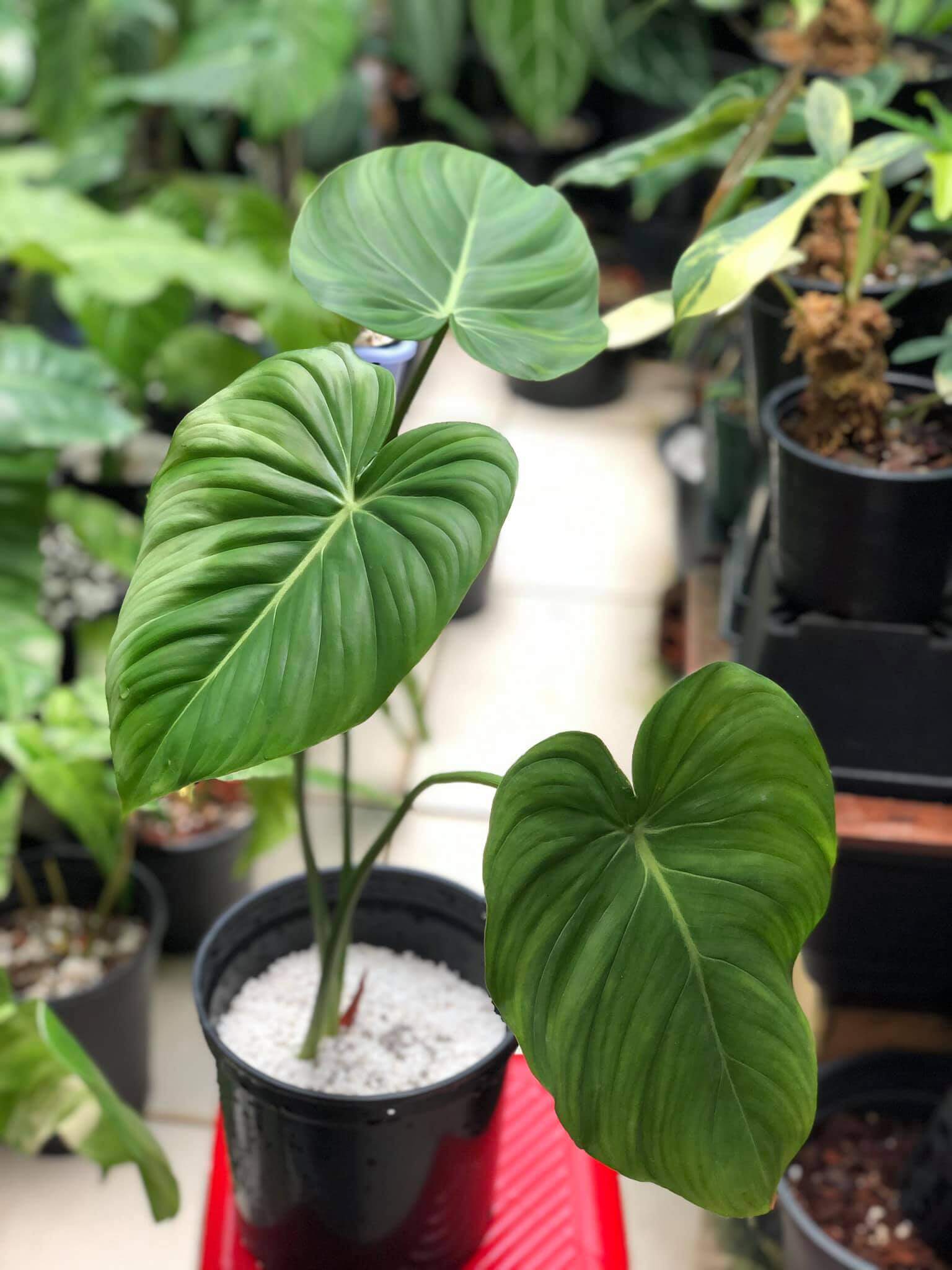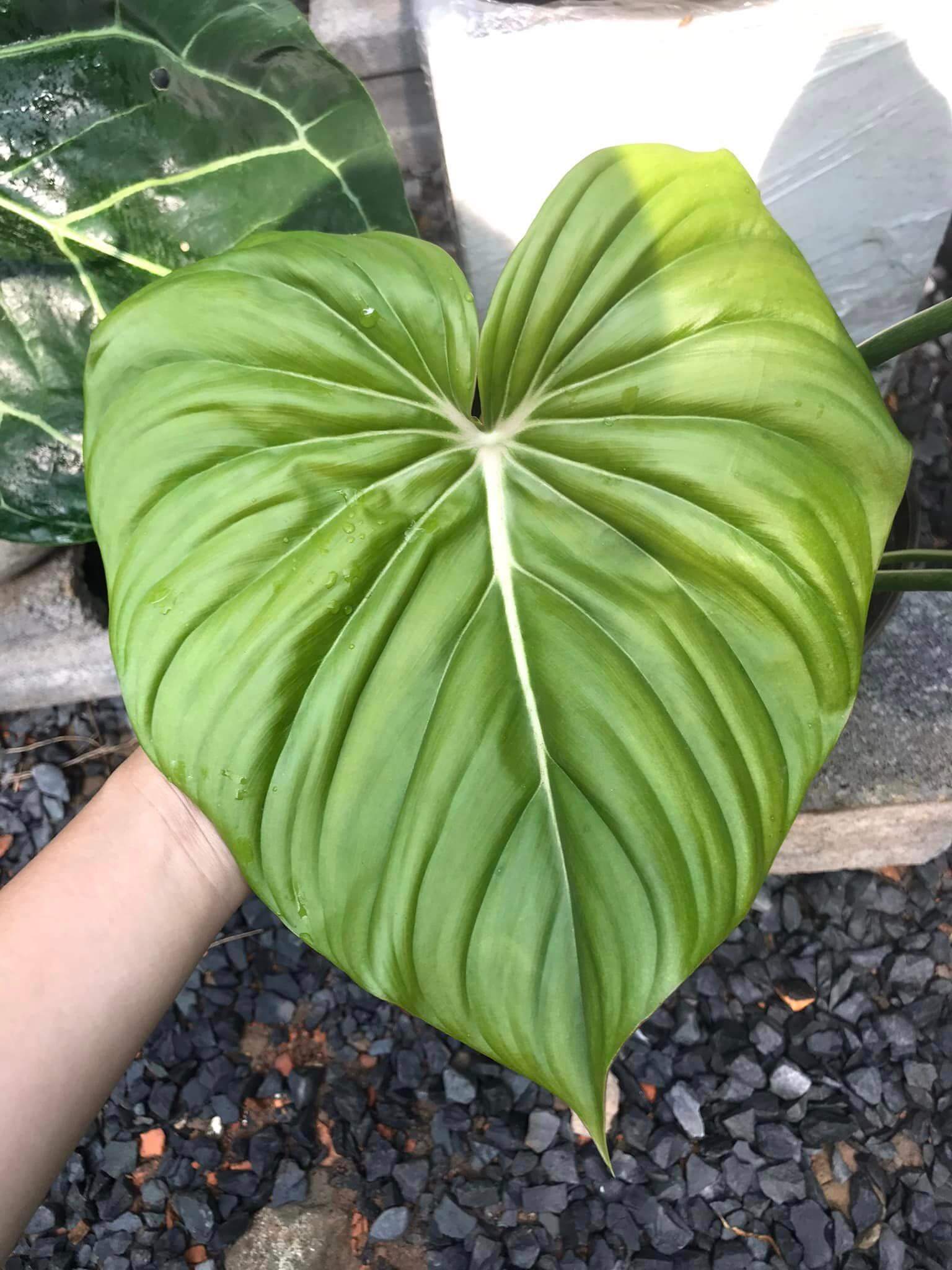Basic Information
The Philodendron McDowell is a charming hybrid of the Philodendron genus that is highly sought after for its gracefulness and adaptability. It is a popular choice among indoor gardeners due to its sturdy constitution, eye-catching appearance, and minimal need for upkeep, making it a perfect plant for both beginners and seasoned greenthumbs.



Light
Light is one of the most important factors for plant growth. A plant’s color intensity and shape depend greatly on the amount of light it receives. Philodendron McDowell is a plant that thrives in bright, indirect sunlight. Although it needs enough light to maintain its brilliant foliage coloring, it should be protected from direct sunlight, which can burn its leaves. The plant will do best in an east- or west-facing window, ensuring it receives ample light without direct exposure.
Water
This Philodendron plant prefers soil that is consistently moist but not soggy. Before watering, check the top two inches of soil for dryness. I suggest using room-temperature water free of chlorine and excess fluoride to prevent shock. Over-watering can lead to root rot, so ensure good drainage and avoid letting the plant sit in standing water. Add water from the top and not directly onto the plant’s soil. Be sure to cover all parts of the soil and wipe off the excess moisture at the end. The plant’s watering needs may vary depending on its surroundings; the Philodendron McDowell plant generally requires more water during the summer and less water during the colder seasons.
Tip: Plants should be watered with lukewarm water to avoid root shock, and excess water should be removed to prevent root rot.
Soil
If you want to ensure that your Philodendron McDowell plant grows healthily, you should use a high-quality potting mix that is well-balanced, well-draining, and can retain moisture without becoming waterlogged. Add organic matter and substances such as perlite, peat, orchid bark, coconut coir, or compost to the soil mix to achieve this. However, it is important to use containers with drainage holes to avoid root rot. To ensure optimal growth and health of this philodendron variety, it is recommended to maintain the soil’s pH level between 5.0 and 6.0. Soil that is overly alkaline or acidic can hinder plant growth.
Temperature
The ideal temperature range for this plant is between 55°F to 80°F (13°C to 27°C). It is not tolerant of cold and doesn’t react well to sudden temperature changes or exposure to air conditioners, heaters, or drafty windows. Extreme cold or sudden temperature fluctuations can lead to stress in the plant, which may result in leaf drop or discoloration.
Humidity
Philodendron McDowell is a houseplant that needs a moderate to high level of humidity, ideally between 65-80%. You can use a humidifier or create a DIY humidity pebble tray to increase the humidity levels. Placing several plants on one tray is also a great way to boost humidity or keep the plant in a humid room such as the bathroom. It’s important to maintain high humidity levels to prevent brown leaf edges or mold growth, which can be detrimental to the plant’s growth. Therefore, close monitoring of humidity levels is crucial.
Fertilizer
For the Philodendron McDowell plant to remain healthy and flourish, it is crucial to use a balanced houseplant fertilizer. This plant prefers fertilizers that have a balanced NPK ratio, with a variety of macro and micronutrients, such as calcium and manganese. During its active growing season, which is from spring through fall, applying diluted houseplant fertilizer once a month is sufficient. Avoid over-fertilizing since Philodendrons do not require a lot of nutrients, and do not fertilize them in winter.
Growth Rate
The Philodendron McDowell grows at a moderate pace and can produce a new leaf every 4-6 weeks in optimal conditions. It can grow up to 3 feet (91 cm) tall indoors and 6.5 feet (2 meters) outdoors.
Tip: Choose a long rectangular planter for McDowell, as it allows ample space for roots to move sideways and re-root into the soil. Round pots won’t suffice as the plant matures. Avoid hanging baskets for this philodendron.
Pet Safety
McDowell is toxic to humans and pets. Keep it away from kids and animals.
Grow in Semi-Hydro
- Philodendrons, celebrated for their lush foliage and adaptability, thrive in semi-hydroponic systems such as LECA/Pon, thanks to their resilient root systems and preference for consistent moisture.
- Shifting a Philodendron to a semi-hydroponic setting works well using a Nutrient Stagnant Wicking (NSW) method, providing a stable and effective environment for growth.
- Within the LECA/Pon environment, Philodendron roots adapt swiftly, effectively managing any early challenges in adapting to the NSW system.
- For nourishing Philodendrons in semi-hydro systems, a nutrient solution with a concentration around 800-1000ppm is optimal.
- Philodendrons are versatile in adapting to a range of temperature and humidity levels, making them ideal for various indoor settings.
- Regular care involves keeping an eye on the water level in the reservoir and periodically flushing the system to ensure the Philodendron’s healthy and consistent growth.
- If your Philodendron is a climber, it’s a must to look at our Moss Pole guide to have a proper set-up.
Tips
- Pruning: Only necessary to remove dead or dying leaves. Prune at the stem base and water the plant afterward to reduce stress.
- Repotting: Repot yearly to replenish the soil and provide more room for growth. Use a container only one size larger to avoid overwatering issues.
- Pest Control: Regularly inspect for pests and treat promptly if needed.
- Leaf Care: Keep leaves clean to improve photosynthesis and plant health.
- Monitoring: Regularly observe the plant for signs of stress or disease and adjust care accordingly
To sum up, Philodendron McDowell is a gorgeous and low-maintenance houseplant that can bring a tropical look to your indoor area. By providing it with the appropriate care and attention, your Philodendron McDowell can produce stunning, lively foliage and become a long-lasting presence in your home.
Happy planting! 🌱


